[ad_1]
It’s Friday night and, judging from the dejected slump of a quartet of would-be diners outside of the legendary Una Pizza Napoletana on the Lower East Side, there are no tables to be had. Around the corner, a similar scene plays out at Nom Wah Tea Parlor, the century-old dim sum restaurant on the bend of a crooked street in Chinatown. A few blocks north, at the Momofuku Noodle Bar, the hungry gaze at the eating through a plate glass window. Everything everywhere is booked all at once.
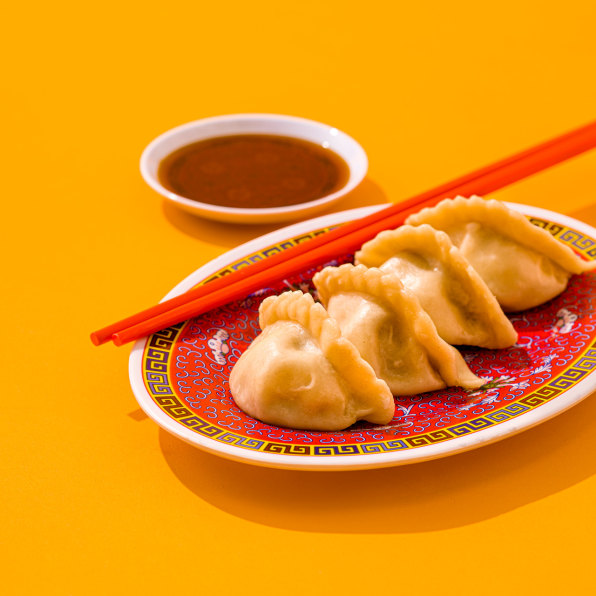
After the enforced austerity of the pandemic, dining out has returned with a vengeance. This is clear to anyone who has tried to score a table as a walk-in or scoured Resy for ever-elusive windows. Eating dinner out has become the 13th labor of Heracles. So why are an increasing number of chefs obsessed not with their restaurants but with the grocery-store aisles?
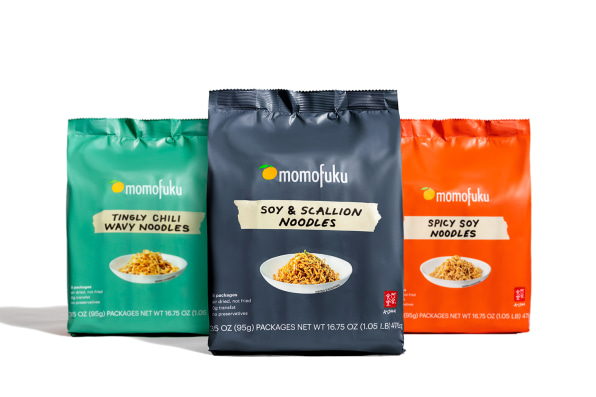
Last month, for instance, Momofuku announced a $17.5 million fundraise from Siddhi Capital to help grow its packaged food business, known as Momofuku Goods and carried by Target, Whole Foods, and other grocers. Soon supermarket shelves will be stocked not just with Momofuku Chili Crunch, soy sauce, and air-dried noodles. Meanwhile Anthony Mangieri, the fanatical pizzaiolo of Una Pizza Napoletana, just launched Genio della Pizza, a line of freezer-aisle-ready pizza pies.
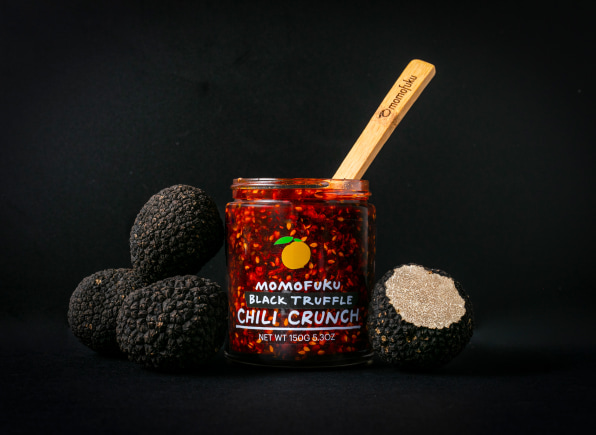
They’re part of an ever-growing portfolio of restaurants that are producing frozen foods and pantry staples. In New York City alone, the group includes Nom Wah, which sells its frozen dumplings nationwide via the gourmet food marketplace Goldbelly; Tacombi, a popular Mexican chain that just introduced a line of burritos called Vista Hermosa; Carbone, the red-hot red sauce joint that now sells red sauce; and even Eleven Madison Park, the highly rated restaurant that now sells soup starter kits and bags of granola through its online store, Eleven Madison Home.
All are flocking to the promised land of consumer packaged goods (CPG). Outside of New York, even Copenhagen’s legendary food-pilgrimage site, Noma, is planning to shutter its doors and put more energy into its Noma Projects packaged goods arm, which sells bottles of smoked mushroom garum for $24.
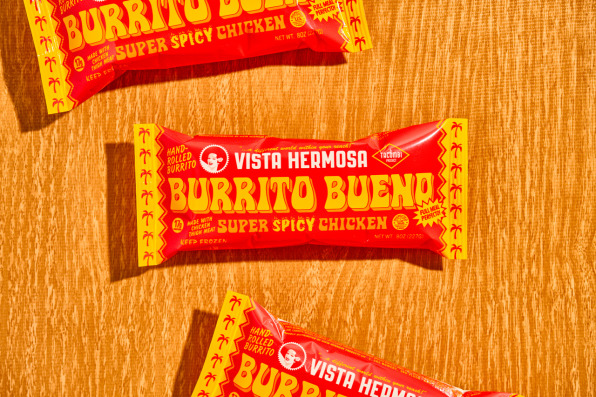
One obvious push factor for this headlong rush into the grocery store is that the business model of a restaurant is fundamentally, and perhaps fatally, flawed. Margins have always been slim, between 3% and 5%. But as the costs of labor, real estate, and food have continued their skyward jag, even the most successful restaurateurs have struggled to stay solvent. Many of lesser luminosity have packed it in.
“Restaurants have always needed to find new means of making ends meet,” says Marguerite Zabar Mariscal, who was recently named CEO of Momofuku Goods, adding to her remit as CEO of Momofuku. “Think about a restaurant that sells [just] food compared to a restaurant that also sells alcohol. Look at delivery, catering, or private dining.”
Restaurants have always had to hustle. But one reason packaged goods—as opposed to services—are ascendant is that the means and model of success has shifted. Any midtown luncher who is long of tooth remembers the fast-casual craze of the mid-to-late aughts that culminated in the $2 billion IPO of Shake Shack in 2015. For restaurateurs, this often took a diffusion model wherein a flagship restaurant or a few flagships would provide name recognition and cachet while an umbrella of diffusion brands would spread around the country, providing almost infinitely scalable profits. Think Tom Colicchio’s Craft and his fast casual ’Wichcraft or David Chang’s Momofuku Ssam Bar and his fast-casual fried chicken sando shop, Fuku.
But this model has foundered of late. One simple reason is because, fast casual or not, the restaurant business model is essentially unchanged, saddled with untenable overhead costs. A bunch of razor-thin margins doesn’t make a fortune so much as a bed of razors.
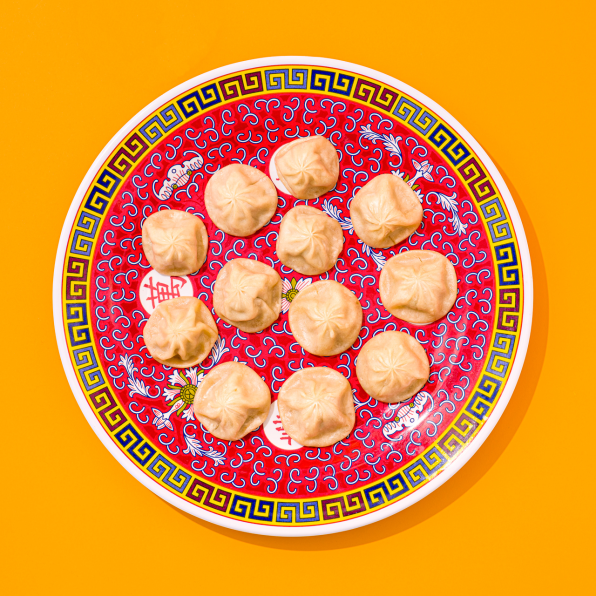
Take, for example, the case of Nom Wah. For the past 100 years, Nom Wah has sold its har gow and shumai from a tiny store on Doyers Street in Manhattan. When Wilson Tang took over his uncle’s business in 2001, coming from a finance background, he began to expand it. By 2015, he realized there was no way to keep up with the demand for handmade dumplings. So he traveled to Asia, purchased industrial dumpling-making machines capable of producing 20,000 dumplings a week and took them back home. It was as if he had birthed Drogon and come to conquer Westeros with pork bao.
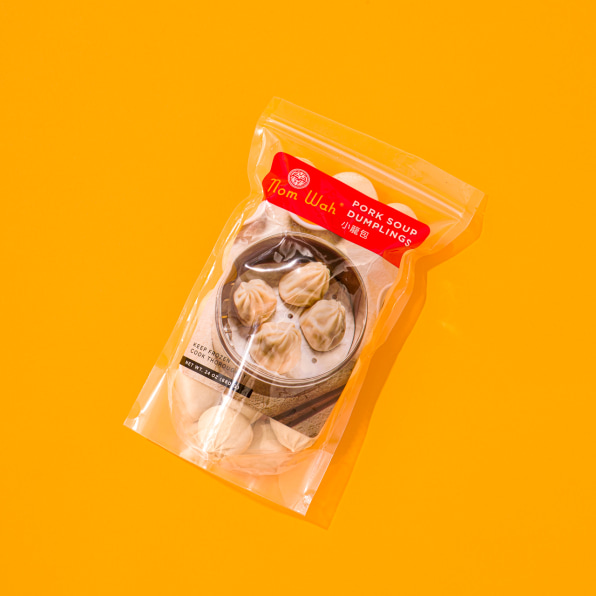
Suddenly, the supply outstripped the demand and he had to find outlets for his excess dumplings. Nom Wah began to open various locations throughout New York on Canal Street, on the Lower East Side, and elsewhere. It even expanded along the Eastern Seaboard to Philadelphia. But as Tang now admits, “The growth was difficult. We had a lot of ups and downs, openings and closings. We weren’t ready. We weren’t properly funded. We couldn’t get the right staffing.”
CPG, on the other hand, offered Tang the possibility of moving his product nationally without the pesky and onerous burden of restaurant locations. “We started going gangbusters during the pandemic, and it hasn’t stopped,” he says. Suddenly, Tang was liberated from the confines of physical locations.
For brands with bigger penumbra than square footage, the push into packaged goods has been a boon. As Mariscal puts it, “Between Dave [Chang] and Momo’s Instagram followers, of which there are more than 2.5 million, 90% don’t live in cities in which we operate restaurants. CPG allows us to reach them wherever they are.”

Tang, like many owners of smaller businesses, relies on partners like Goldbelly, which ships nationwide but for a hefty price. Bigger players, however, rely on the gargantuan scale of retailers like Whole Foods. “For a national scalable brand,” says Una Pizza’s Anthony Mangieri, the famously purist pizza-maker, “Whole Foods is the key.”

Frozen pies might seem sacrilegious for a man like Mangieri. After all, what is a chef whose pizza was ranked the best in the world doing playing in the same waters as DiGiorno? But, says Mangieri, that is precisely the point: “There was no good frozen pizza out there.” When he was considering expanding his restaurant from one storefront on the Lower East Side, Mangieri looked for a way to do so that wouldn’t diminish his reputation as an uncompromising pizza master. “What could I do without having to dilute the small, intimate thing I do at the restaurant? Pizza is obviously the most logical thing.”

After years of searching for a contract packager, or co-packer, that could live up to his standards, in February this year Mangieri launched Genio Della Pizza, a line of four frozen pies, all made in Italy. In August, Whole Foods will begin carrying the line in the North Atlantic and northeast regions. “We can produce 30,000 frozen pizzas a day and 30,000 pizzas a year at Una,” he says. “So if Whole Foods buys 10 pallets of frozen pizza, that’s so much more than what I could ever do from this little restaurant.”
[ad_2]
Source link

